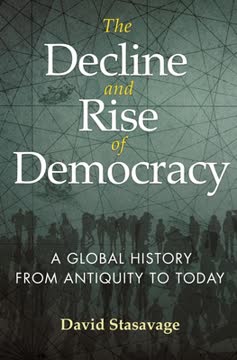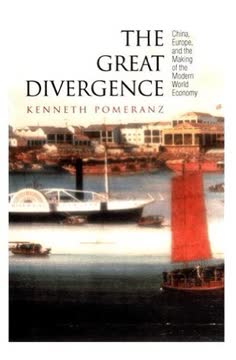Key Takeaways
1. Early Democracy: A Natural, Widespread Human Phenomenon
If we see seeking consent as a basic ingredient of democracy, then we can say that democracy itself occurs naturally among humans, even if it is far from inevitable.
Beyond the Greek narrative. The conventional story of democracy originating in ancient Greece overlooks the independent development of democratic practices in diverse societies across the globe. Examples include the Huron of North America, the Tlaxcala of Mesoamerica, and various communities in ancient Mesopotamia, India, and precolonial Africa. These instances suggest that democracy, defined as seeking consent from the governed, arises organically in human societies.
Consent as a core ingredient. Early democracy thrived where rulers needed cooperation and information from their people. This necessity led to the formation of councils and assemblies where members could voice their consent or opposition. Even without formal veto power, these bodies wielded influence through their knowledge and ability to withhold cooperation.
Diversity in early forms. While early democracy was widespread, it manifested in various forms. Some societies featured broad participation, while others involved more elite gatherings. Regardless of the level of participation, these systems shared the fundamental characteristic of requiring rulers to seek consent from those they governed.
2. State Weakness: Fertile Ground for Early Democracy
Early democracy emerged when rulers needed consent and cooperation from their people because they could not govern on their own.
The weak state advantage. Early democracy flourished in environments where rulers lacked the capacity to govern unilaterally. This weakness stemmed from factors such as uncertainty about production, ease of exit for the populace, and a greater need for the people's resources than vice versa. In such contexts, rulers were more likely to accept collaborative governance.
Factors fostering state weakness:
- Small-scale settings: Facilitated regular participation in councils and assemblies.
- Lack of knowledge: Rulers lacked knowledge of what people were producing, incentivizing power-sharing for better information.
- Exit options: When people could easily move to new locations, rulers were compelled to govern more consensually.
The autocratic alternative. The alternative to early democracy was autocracy, often supported by the construction of a state bureaucracy. Autocrats relied on subordinates they controlled to gather information and enforce decisions, rather than seeking consent from independent councils.
3. Technology's Double-Edged Sword: Undermining and Enabling Democracy
The paradox of civilization’s advance was that it made autocracy function more effectively.
Civilization's paradox. While technological advancements often improve living standards, they can also undermine early democracy. Technologies like writing, mapping, and intensive agriculture made it easier for rulers to monitor production and control populations, reducing their reliance on consensual governance.
Specific technologies and their impact:
- Writing: Facilitated communication and record-keeping for bureaucracies.
- Soil mapping: Enabled rulers to assess and tax agricultural production more effectively.
- Intensive agriculture: Made landscapes more legible and production more predictable for outsiders.
Europe's initial backwardness. Ironically, Europe's initial technological backwardness played a role in preserving early democracy. European rulers lacked the tools and knowledge to build strong bureaucracies, forcing them to rely on assemblies and councils.
4. Europe's Unique Path: From Weakness to Modern Representation
Ironically, it was Europe’s backwardness that laid the ground for the rise of modern democracy.
Europe's divergence. Unlike China and the Middle East, early democracy persisted and evolved in Europe, eventually leading to modern democracy. This unique trajectory was shaped by several factors, including the weakness of European rulers and the slow progress of science and civilization.
Key developments in Europe:
- Survival of early democracy: Early democracy continued to thrive rather than being supplanted by autocratic rule.
- Scaling up democracy: Europeans eventually succeeded in scaling up the practice of early democracy to societies covering large territories.
- Evolution to modern democracy: Early democracy evolved into modern democracy through a series of steps, including the development of political representation and universal adult suffrage.
The irony of weakness. European rulers' long-term weakness, stemming from a lack of state bureaucracies and technologies for monitoring production, laid the groundwork for the rise of modern democracy.
5. China's Bureaucratic Alternative: Efficiency and Control
The course of Chinese political development resembles the European one stood on its head.
Early autocratic governance. In contrast to Europe, China's political development followed an autocratic path from an early date. The Shang dynasty established a system of strict inheritance rules and mobilized large military forces, laying the foundation for centralized control.
Factors favoring autocracy in China:
- Natural environment: The Loess Plateau provided an excellent basis for early agriculture, leading to a more compact pattern of settlement.
- Precocious bureaucracy: The early development of a state bureaucracy, particularly during the Western Zhou dynasty, provided rulers with the means to govern without relying on societal networks.
- Imperial examination system: The perfection of an imperial examination system during the Tang and Song dynasties provided rulers with a means of bureaucratic recruitment that did not depend on societal networks outside of their control.
A stable alternative. Autocracy in China proved to be a very stable form of political development. The state got there first, and this made it difficult for democracy to emerge.
6. Islam's Lost Democracy: A Tale of Inherited Power
It was the swift inheritance of a preexisting state—not Islam—that led to the demise of early democracy in the Middle East.
Early democracy in Arabia. Early democracy prevailed in Arabia during the pre-Islamic period, with rulers governing through councils and lacking state bureaucracies or permanent military forces. This system was sustained by nomadic societies where people could easily move elsewhere if dissatisfied.
The Umayyad shift. The swift expansion of Islam led to the conquest of more densely populated lands with settled agriculture and existing state structures. The Islamic conquerors inherited a centralized bureaucracy from the Sasanian Empire, enabling them to govern autocratically with little need for consultation.
The role of contingency. The demise of early democracy in the Middle East was not inevitable. Had the Islamic expansion occurred earlier, before the Sasanian reforms, the outcome might have been different.
7. Modern Democracy's Fragility: Participation and Trust
In comparative terms modern democracy has existed for only a brief time.
A recent experiment. Modern democracy, characterized by competitive elections and universal suffrage, is a relatively recent invention compared to early democracy. Its success is not guaranteed, and it faces several potential fracture points.
Fracture points of modern democracy:
- Episodic participation: Citizens participate primarily through voting, leading to potential distrust and disengagement.
- Coexistence with bureaucracy: The state bureaucracy manages day-to-day affairs, potentially undermining the belief that the people are governing themselves.
The need for continual investment. To sustain modern democracy, societies must continually invest in citizen engagement and address the potential for distrust and disengagement.
8. The American Experiment: A Distant State and Citizen Engagement
The Constitution of 1787 established democratic rule across a large territory, much larger than was common for early democracies, and this was paired with a form of participation that was broad but also episodic.
A large and distant state. The U.S. Constitution established democratic rule across a vast territory, pairing broad but episodic participation with a strong central state. This created a unique set of challenges for maintaining citizen engagement and trust.
Madison's warning. James Madison recognized the need for concrete investments to ensure that the public could inform itself about government in a large republic. He supported efforts to subsidize the distribution of newspapers.
The importance of citizen engagement. In a large democracy, the idea that the public can accurately inform itself and trust government cannot be taken for granted. Continual investments in citizen engagement are essential for addressing this challenge.
9. Economic Development: A Complicated Relationship with Democracy
Even after English monarchs had agreed to the Magna Carta, they were forced to settle with a vastly lower rate of taxation than were Chinese emperors or Muslim caliphs.
No guarantee of democracy. The conventional wisdom that economic development leads to democracy is not fully supported by historical evidence. Early democracy thrived in Europe despite its relative poverty compared to regions like China and the Middle East.
Early democracy and autocracy. Early democracy and autocracy each had strengths and weaknesses when it came to economic development. Early democracy fostered decentralized power and property rights protection, while autocracy facilitated wider markets and innovation diffusion.
Modern democracy's potential. Modern democracy has the potential to combine the advantages of both systems, with constrained leaders and large national markets. However, the history of the United States suggests that barriers to entry and monopoly power can still emerge.
10. The Future of Democracy: Adaptation and Resilience
Through the practice of early democracy, members of society gain a habit of acting collectively and there is an opportunity for rulers and people to resist autocracy and instead jointly build a state.
Learning from history. Early democracy existed for thousands of years, demonstrating its robustness. Modern democracy is a more recent experiment, and its future depends on understanding the lessons of history.
Lessons for new democracies:
- Democratic governance comes naturally to humans under certain conditions.
- Democratization is more likely to survive when the initial power of the central state is weak.
- Institutions of electoral accountability can be layered over preexisting institutions of early democracy.
The future of American democracy. The survival of democracy in the United States depends on continued investments to keep citizens connected with a distant state and on preserving a tradition of collective governance that can resist autocratic encroachment.
Last updated:
FAQ
What is The Decline and Rise of Democracy by David Stasavage about?
- Comprehensive global history: The book traces the evolution of democracy from ancient times to the present, examining how democratic practices emerged, declined, and reemerged across different world regions.
- Comparative analysis: Stasavage compares the political development of Europe, China, the Middle East, and the Americas, exploring why modern democracy first emerged in Europe.
- Focus on institutions: The book distinguishes between early democracy (council-based governance) and modern democracy (elections and universal suffrage), highlighting the fragility and ongoing challenges of democratic institutions.
- Contemporary relevance: It addresses current anxieties about democratic backsliding and the appeal of autocratic models, questioning democracy’s future durability.
Why should I read The Decline and Rise of Democracy by David Stasavage?
- Understanding democratic fragility: The book provides historical context for current concerns about democracy’s decline, showing that its success is not guaranteed and requires active maintenance.
- Insight into institutional design: Readers gain a nuanced understanding of how assemblies, suffrage, and executive power have evolved and shaped democratic stability.
- Global perspective: By comparing Western democracies with autocratic models like China, the book offers a broad view of political development and its implications today.
- Practical lessons: Stasavage’s analysis helps readers think critically about the future of democracy and the reforms needed to sustain it.
What are the key takeaways from The Decline and Rise of Democracy by David Stasavage?
- Democracy as experiment: Modern democracy is a recent and ongoing experiment, remarkable for its survival but inherently fragile due to risks like shallow participation and executive overreach.
- Historical sequencing matters: Democracies are more likely to endure when traditions of consent and collective governance precede the rise of strong bureaucratic states.
- Citizen engagement is crucial: Sustained democratic health depends on deepening participation, building trust, and preventing elite domination.
- Continuous investment required: Democracy’s survival and quality require ongoing institutional reforms and efforts to address citizen distrust and executive power.
How does David Stasavage define and distinguish early democracy from modern democracy in The Decline and Rise of Democracy?
- Early democracy: Characterized by rulers governing jointly with councils or assemblies, often requiring active consent from independent members of society, especially in small-scale settings.
- Modern democracy: Defined by competitive elections, universal suffrage, and broad but episodic citizen participation, coexisting with a professional state bureaucracy.
- Key differences: Early democracy involved frequent, direct participation and constrained rulers through councils, while modern democracy relies on representation and faces risks of citizen disengagement.
- Fragility and evolution: Stasavage emphasizes that both forms are fragile and that the transition from early to modern democracy introduced new challenges, especially regarding scale and bureaucracy.
What are the origins and global characteristics of early democracy according to David Stasavage?
- Widespread phenomenon: Early democracy was not unique to Europe; it appeared in various forms across the world, including ancient China, the Middle East, and pre-Islamic Arabia.
- Consent and councils: It arose when rulers needed the active consent of councils or assemblies, which could constrain rulers and assist in governance.
- Participation spectrum: The degree of participation varied, from broad and frequent (e.g., Athens) to more elite-based or limited forms.
- Natural governance: Stasavage argues that early democracy is a naturally occurring form of governance, emerging wherever rulers could not easily dominate society.
What factors led to the decline of early democracy and the rise of autocracy, as explained in The Decline and Rise of Democracy?
- Societal scale and monitoring: As societies grew larger and rulers developed better means to monitor production (e.g., through writing and bureaucracy), early democracy declined.
- Reduced exit options: When people had fewer options to leave or resist, rulers were less compelled to govern by consent, favoring autocratic rule.
- Technological advances: Innovations in writing, mapping, and agriculture enabled rulers to bypass councils and govern more effectively through bureaucracy.
- Centralization of power: The rise of strong, centralized states made large-scale assembly governance infeasible, leading to autocracy in places like China and the Islamic world.
How did technology and bureaucracy undermine early democracy, according to David Stasavage?
- Soil mapping and agriculture: Technologies like Chinese “fish scale” soil maps and Aztec soil glyphs allowed rulers to assess and tax production directly, reducing reliance on local councils.
- Writing systems: The spread of writing enabled the creation of bureaucracies that could communicate, record, and enforce rules without needing assemblies.
- European backwardness as advantage: Europe’s lag in adopting these technologies helped preserve early democratic practices longer, as rulers lacked the tools for centralized control.
- Bureaucratic dominance: The rise of professional bureaucracies shifted power away from participatory councils, making autocratic governance more feasible.
Why did Europe develop a different political trajectory from China and the Middle East, according to The Decline and Rise of Democracy?
- Weak post-Roman states: After Rome’s fall, European rulers were weak, lacking strong bureaucracies and advanced technologies, which allowed early democracy to survive and expand.
- Dispersed populations: Europe’s extensive agriculture and scattered settlements made centralized control difficult, fostering local autonomy and self-governance.
- Development of representation: European towns formed autonomous communes and representative assemblies, innovating political representation and consent theories absent in China and the Islamic world.
- Sequencing of institutions: The tradition of assemblies and consent-based governance preceded the rise of strong states, setting the stage for modern democracy.
How did the theory and practice of political representation develop in medieval Europe, as described by David Stasavage?
- Communal movement: Towns and cities asserted self-governance, forming communes with elected councils and demanding representation in princely assemblies.
- Legal principles: The Roman legal maxim “quod omnes tangit” (“what touches all must be approved by all”) was adapted to justify consent-based governance and taxation.
- Mandates and plenary powers: Medieval representatives were often bound by strict mandates from their constituencies, unlike modern representatives who have more autonomy.
- Negotiation with monarchs: Monarchs sometimes tried to impose “full powers” on representatives to bypass mandates, illustrating ongoing tensions over representation.
How does The Decline and Rise of Democracy by David Stasavage compare Western democracy with China’s bureaucratic autocracy?
- Different historical paths: Western democracies evolved with institutions of consent and assemblies before strong states, while China developed a powerful bureaucracy first, without governance by consent.
- Accountability models: China’s rulers were held accountable through the Mandate of Heaven (performance-based legitimacy), not through popular consent or assemblies.
- Economic development: China’s commercial growth strengthened centralized state power rather than leading to democratization, challenging optimistic theories about economic development and democracy.
- Durability of autocracy: The book explains why China’s autocratic model has persisted, rooted in its early bureaucratic development and lack of assembly traditions.
What are the two main fracture points of modern democracy identified by David Stasavage in The Decline and Rise of Democracy?
- Thin citizen participation: Modern democracy risks broad but shallow participation, leading to perceptions of elite domination and citizen disengagement.
- Executive power concentration: Elected leaders can behave autocratically if legislative checks are weak, making it difficult to constrain executive authority.
- Historical roots: These fracture points emerged as societies transitioned from early, participatory democracy to large-scale, representative systems.
- Ongoing challenges: Addressing these issues requires continuous institutional innovation and investment in democratic engagement.
What reforms and solutions does David Stasavage propose in The Decline and Rise of Democracy to address contemporary democratic challenges?
- Return to participatory practices: Stasavage suggests reviving early democratic practices such as assemblies excluding elites, lotteries combined with elections, and citizen-led political trials or recalls.
- Leveraging technology: Modern participatory technologies could create tighter links between representatives and citizens, deepening engagement beyond periodic voting.
- Devolving power: Decentralizing authority to local levels (subsidiarity) can help build trust, though it has limitations in large, complex societies.
- Quality over survival: The book emphasizes that democracy’s survival is not enough; reforms should aim to ensure that democracy remains responsive and satisfying to citizens, not just persistent in name.
Review Summary
The Decline and Rise of Democracy presents a comprehensive global history of democratic governance, challenging conventional views. Stasavage argues that early forms of democracy were widespread and natural to human societies, not exceptional. He explores factors influencing democratic development, including geography, agriculture, and bureaucracy. The book emphasizes the importance of sequencing in political development and presents a nuanced view of democracy's evolution. While some readers found the arguments compelling, others criticized the broad definition of democracy and lack of focus on certain regions.
The Princeton Economic History of the Western World Series Series
Similar Books
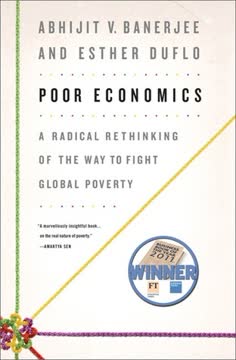
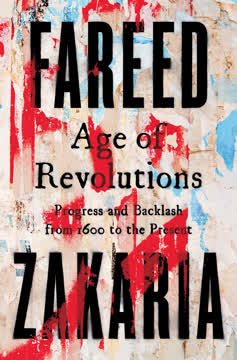

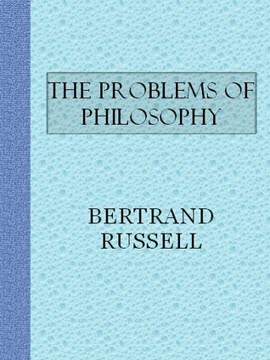

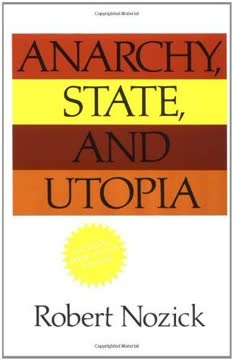
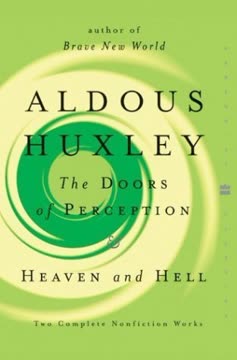

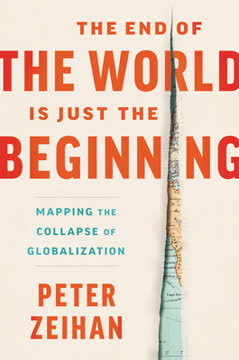

Download PDF
Download EPUB
.epub digital book format is ideal for reading ebooks on phones, tablets, and e-readers.
